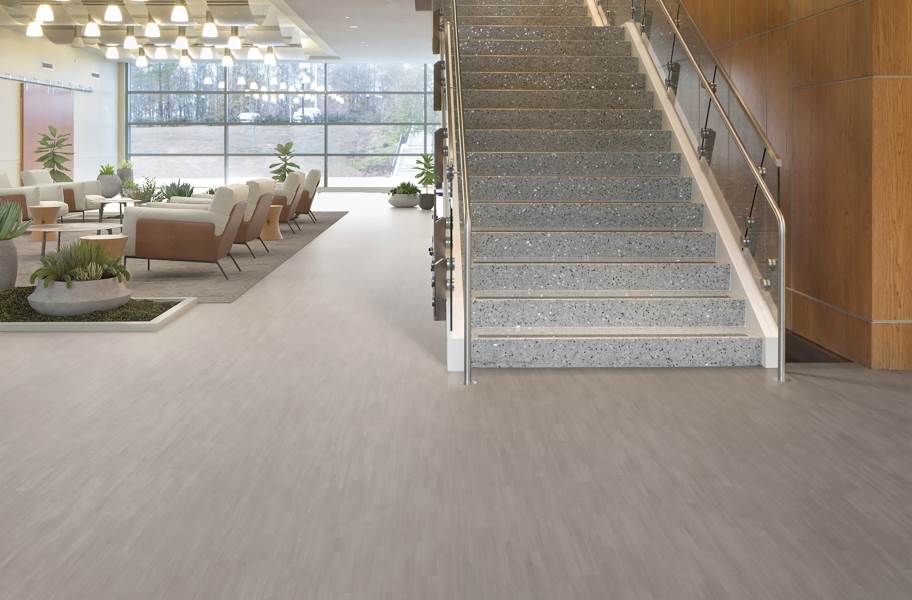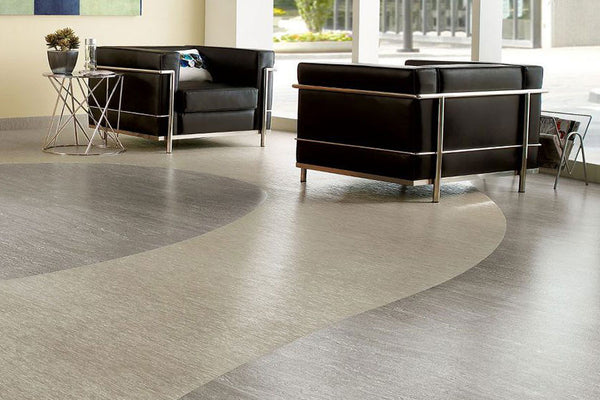Key Considerations for Selecting Commercial Flooring
Choosing the right commercial flooring is a strategic process that involves balancing several key factors:
Durability and Longevity: Commercial floors must be tough. They should resist abrasions, scratches, and wear from constant foot traffic, heavy equipment, and furniture. A durable floor will require less frequent replacement, offering a better return on investment over time.
Safety and Maintenance: Safety is paramount. The flooring must be slip-resistant to prevent accidents, especially in areas prone to moisture. It should also be easy to clean and maintain to ensure hygiene and reduce labor costs.
Functionality and Performance: Different environments have different needs. A hospital needs seamless, antimicrobial flooring, while a gym requires shock-absorbent surfaces. The flooring must support the specific activities of the space.
Aesthetics and Branding: Flooring sets the tone for a space. The color, pattern, and texture should complement the interior design and reinforce the brand’s image, creating an inviting and professional environment for clients and employees.
Cost: This includes not only the upfront cost of materials and installation but also the long-term cost of maintenance and potential replacement. A cheaper initial option might become more expensive over time due to repairs.
Popular Types of Commercial Flooring
The market offers a wide variety of materials, each with unique properties suited to different commercial applications.

1. Vinyl Flooring
Vinyl is one of the most popular commercial flooring choices due to its versatility, durability, and cost-effectiveness.
Luxury Vinyl Tile (LVT) & Luxury Vinyl Plank (LVP): Mimics the look of natural wood or stone with remarkable realism. It is highly durable, water-resistant, and easy to maintain, making it ideal for high-traffic areas like retail, hospitality, and corporate offices.
Sheet Vinyl: A seamless, roll-out product perfect for environments requiring superior hygiene, such as healthcare facilities and laboratories. Its seamless nature prevents the growth of bacteria and is very easy to clean.
2. Carpet and Carpet Tiles
Carpet offers comfort, noise reduction, and a wide range of design options, but is best suited for specific environments.
Broadloom Carpet: A large, rolled carpet used for wall-to-wall installation. It creates a seamless, luxurious look, often found in high-end offices, hotel lobbies, and conference rooms.
Carpet Tiles: Modular squares of carpet that can be easily replaced if stained or damaged. This makes maintenance incredibly simple. They are ideal for corporate offices and educational facilities where quick repairs are a priority.
3. Concrete Flooring
Concrete is a modern, industrial, and highly durable option that can be both functional and aesthetically striking.
Polished Concrete: A finished concrete surface that is ground down and polished to a smooth, reflective sheen. It is extremely durable, low-maintenance, and a great choice for warehouses, retail stores, and modern office spaces.
Epoxy Coatings: A protective resin coating applied over concrete. It creates a non-porous, highly resistant surface that is easy to clean and is excellent for industrial settings, garages, and hospitals.
4. Tile Flooring
Tile, including ceramic, porcelain, and quarry tile, is known for its durability, water resistance, and classic elegance.
Porcelain Tile: Extremely hard and dense, porcelain is highly resistant to water, stains, and heavy traffic. It is a fantastic choice for restaurants, commercial kitchens, and restrooms.
Quarry Tile: An unglazed, dense tile that is naturally slip-resistant, making it a safe and durable choice for food service areas and industrial kitchens.
5. Rubber Flooring
Rubber is the go-to option for its shock absorption, comfort, and slip resistance.
Usage: Primarily used in gyms, sports facilities, and playgrounds, where cushioning and durability are essential. It also provides excellent sound absorption.
The Impact on Business Operations
The choice of commercial flooring is not just a one-time decision; it has a lasting impact on a business’s daily operations:
Hygiene and Health: In healthcare and food service, flooring is a key component of infection control. Seamless and non-porous materials prevent the buildup of germs.
Acoustics: In open-plan offices or educational settings, flooring can significantly impact noise levels. Carpet and rubber flooring help absorb sound, creating a more comfortable and productive environment.
Ergonomics and Comfort: In retail and hospitality, employees spend long hours on their feet. A floor with good underfoot comfort can reduce fatigue and improve employee well-being.
Maintenance Costs: A durable, easy-to-clean floor reduces the need for expensive cleaning chemicals, labor, and premature replacement, directly impacting the bottom line.

Conclusion
Commercial flooring is a foundational element of any business space, blending form and function to create environments that are safe, durable, and aesthetically pleasing. By carefully considering durability, safety, maintenance, and the specific needs of a business, owners can make an informed decision that will provide a strong return on investment for years to come. Whether the goal is to create a sleek corporate aesthetic with LVT or a hygienic, seamless environment with sheet vinyl, the right flooring choice is an investment in the longevity and success of the business itself.